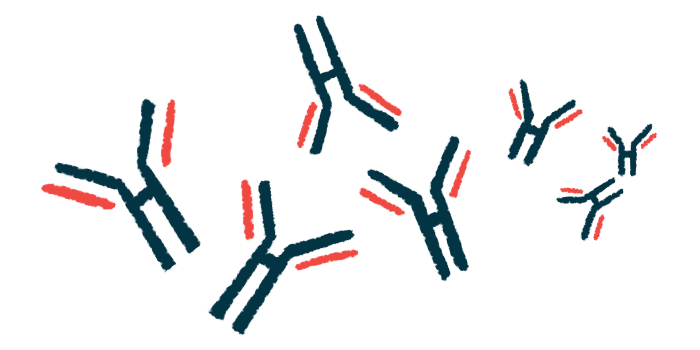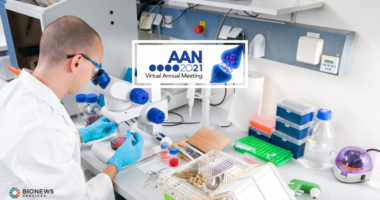New cell-based study reveals autoimmune mechanism in DM2
Discovery paves way for targeted therapies to treat disease, researchers say

A cell-based study revealed the biological mechanism behind the increased tendency for people with myotonic dystrophy type 2 (DM2) to develop autoimmune diseases.
Researchers found that the genetic defect that causes DM2, called a repeat expansion, indirectly triggered an abnormal, antiviral immune response in patient cells.
“That was our ‘aha’ moment,” study lead Claudia Günther, MD, of Carl Gustav Carus University Hospital in Dresden, Germany, said in a press release. “We have identified a mechanism and a pathway that now open up new possibilities for targeted therapies of the disease.”
“It is very exciting to see how the results of our basic research could potentially improve the care of these patients,” Günther said.
The study, “Chronic endoplasmic reticulum stress in myotonic dystrophy type 2 promotes autoimmunity via mitochondrial DNA release,” was published in the journal Nature Communications.
We have identified a mechanism and a pathway that now open up new possibilities for targeted therapies of the disease.
Researchers knew of autoimmune link, but not reason for it
Myotonic dystrophy is the most common form of muscular dystrophy that begins in adulthood. There are two types of the disorder: Type 1 (DM1) is associated with the DMPK gene, and type 2 is linked with the CNBP gene.
Both MD types are caused by a DNA segment in each gene that is repeated many more times than normal — a repeat expansion. This leads to abnormally long messenger RNA (mRNA), which forms stable clumps and interferes with normal cellular processes, ultimately causing symptoms. mRNA is the intermediate molecule that serves as a template to make proteins.
Studies suggest that DM2 patients have a higher incidence of autoimmune diseases, which occur when the immune system mistakenly attacks healthy tissue, than DM1 patients or the general population. The underlying mechanism for that was previously unknown.
The researchers examined 37 DM2 patients, and found that 40.5% of them had autoimmune diseases, compared with 5% to 10% of the general population. Their conditions spanned a range of autoimmune disorders including those affecting the skin or the glands that produce tears or saliva, rheumatoid arthritis, systemic sclerosis, and type 1 diabetes.
Blood tests also found that 75.7% of patients with DM2 and 61.5% of DM1 patients tested positive for self-reactive antibodies associated with autoimmunity.
Identifying trigger to immune response
Using cells collected from DM2 patients, the researchers identified an elevated type-1 interferon (IFN) signature as the trigger of chronic immune stimulation. Under normal circumstances, type-1 IFN, an immune-signaling protein, and associated genes are activated to fight viral infections.
“There were genes upregulated in the patient cells that are normally there to combat viruses,” said Sarah Rösing, a doctoral student in Günther’s group and the study’s first author. “We quickly realized that this was an important discovery.”
“While this type of immune response helps to combat viral infection, chronic activation is often connected to autoimmunity, so we really needed to understand where it comes from,” Rosing said.
The researchers ruled out the idea that that the repeat expanded mRNA molecules directly triggered the IFN-related immune response, as the immune system does with viral RNA.
“Unrestricted RNA can act as a danger signal in the cell, yet we did not observe evidence for direct sensing of repeat RNA by specific RNA sensors of the innate immune system,” the researchers wrote.
The repeat expansion mRNA did, however, lead to the production of abnormal proteins via a process called repeat-associated non-AUG (RAN) translation in patients’ skin.
‘Clear signals something is wrong’
RAN fragments appeared to activate a stress response in the endoplasmic reticulum (ER), a compartment within cells where many proteins are folded. ER stress, in turn, triggered damage to mitochondria, the structures in cells that generate energy.
“Mitochondrial damage and ER stress in our cells are clear signals that something is wrong,” said co-senior author Eva Bartok, MD, of the University of Bonn. “This type of stress can definitely look like a viral infection and trigger an antiviral response.”
Damaged mitochondria were then found to release small amounts of DNA, triggering an IFN-related immune response via cGAMP synthase, or cGAS. This enzyme normally senses viral DNA in cells, which stimulates the release of IFN to fight the infection.
“Altogether, our study provides a mechanistic rationale for autoimmune disease in DM2 by linking RNA repeat expansion with ER mitochondrial stress, cGAS activation, and the induction of systemic autoinflammation and autoimmunity,” the researchers wrote. “Elucidating this pathway reveals new potential therapeutic targets for autoimmune disorders associated with repeat expansion diseases.”
“Our data provides an important rationale for inhibiting [blocking] cGAS and the type I interferon pathway in myotonic dystrophy 2,” said Bartok.







